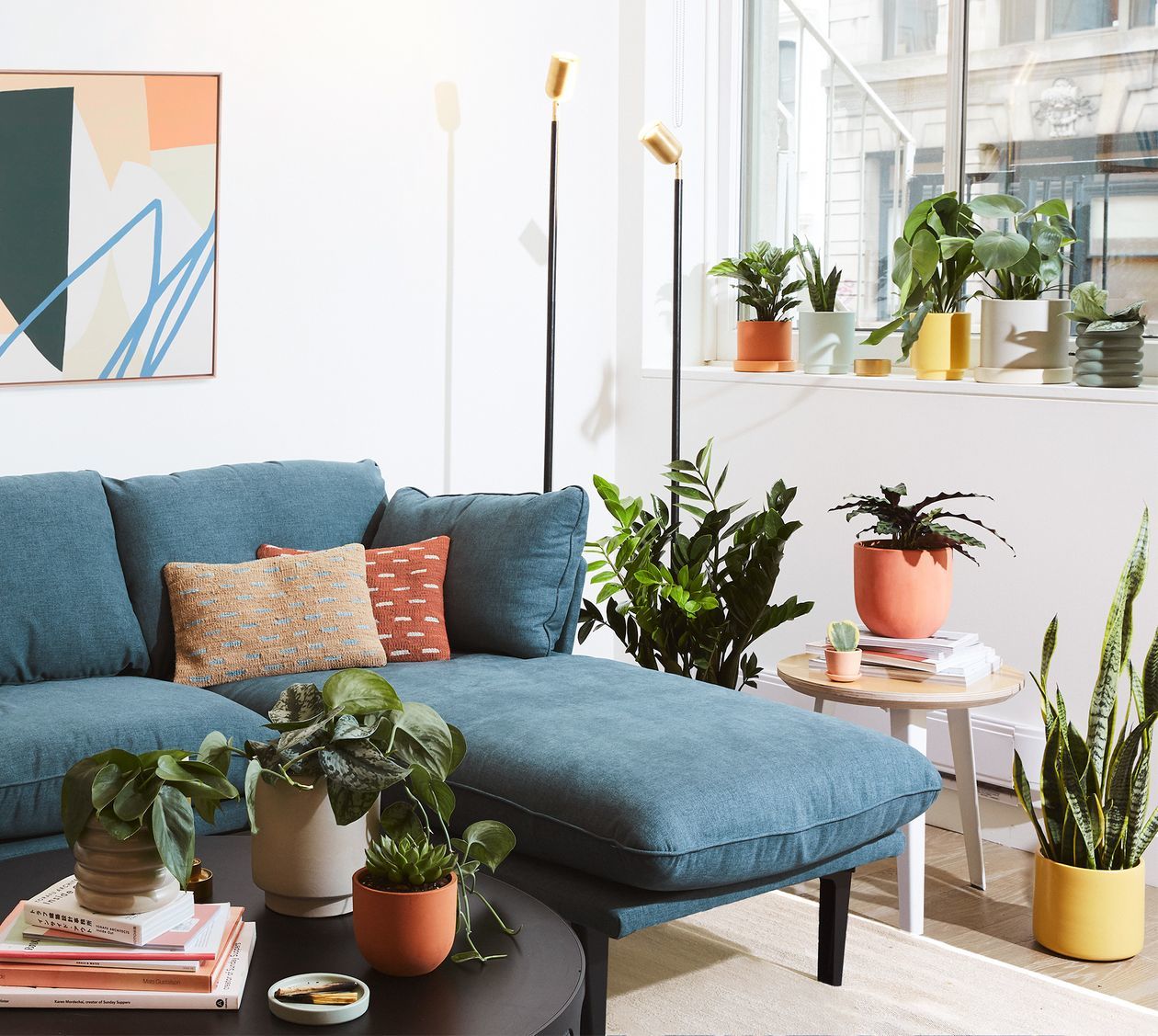
Going Green: Ideas for Indoor Plants
When you give a plant a home inside your own, suddenly, your space comes to life—literally. Aside from the aesthetic perks, plants have proven benefits for overall well-being.
“Indoor plants have been shown to boost mood and reduce stress levels,” said Erin Marino, director of brand marketing for plant store The Sill. “When we get in touch with nature, we reduce our mental fatigue and stress and get a little bit of relaxation in return. Those same feelings of contentment and tranquility can also come from looking at and tending to our houseplants.”
For inspiration on different types of plants to introduce to your home, we asked the plant pros for some of the trendiest, easy-to-care-for greens.
For No Fuss, Consider Succulents, Ficus, ZZ plants or Aglaonema
“Succulents are very trendy right now, and for good reason: They come in a wide variety of styles, sizes and colors, and they’re also easy to maintain. Succulents hold water by nature and only require that you water them roughly once a month. We commonly use several varieties, including the zebra-striped Haworthia, that thrive in a range of light conditions and need almost no water. That said, succulents naturally grow in high-light, high-heat conditions, so don’t expect them to last forever indoors. Instead, think of them similarly to cut flower arrangements, but with a longer lifespan—you’ll need to change them out every few months.
“The Ficus benjamina is a lovely type of tree that is considerably less finicky than other ficus varieties. It has dense, silver dollar-sized leaves and often grows as a single trunk topped with a big bushel of greens—almost like a lollipop. It tends to read very classic because of its manicured look, so it works well in traditional spaces with classic décor. These popular trees can be anywhere from six inches to 10 to 15 feet tall, so larger trees are perfect to add to a room and fill out a corner. Benjamina ficus do best in medium to high light and should be watered once every seven to 10 days, almost drying out between waterings.
“The ZZ plant boasts a sculptural shape and beautiful, glossy leaves. In fact, the leaves are so pristine and shiny that we often have clients ask if they are fake. This hardy plant reads a bit contemporary so it really shines in modern spaces, but it can adapt to the aesthetics of any room with the right vessel. Best of all, it is nearly impossible to kill. ZZ plants can survive in high light conditions, direct sunlight or even no light. Overwatering is the only major threat to a ZZ plant. To keep it thriving for years, simply water sparingly just once a month.
“The aglaonema plant is another ultra-hardy variety with large, glossy oval-shaped leaves. It is similar to the ZZ plant in many ways—primarily its ease of maintenance and tolerance for low-light conditions—but has a more classic look and therefore works better in more traditional spaces. Chinese evergreens can survive in nearly any light conditions and require watering only once a month.”

For Lower Light, Pothos, Snake Plants and Bird’s-Nest Ferns
“Otherwise known as the ‘cubicle plant‘ because of its tolerance to less-than-ideal conditions like low light, the Pothos is our go-to for any type of indoor space. Its quick-growing vines can grow to over 10 feet long and will make any space look lush. It thrives in medium to low indirect light and needs water every one to two weeks, allowing soil to dry out between watering. Expect to water more often in brighter light and less often in lower light.
 A bird's-nest fern
A bird's-nest fern“If you’re looking for the perfect tropical houseplant, look no further than the bird’s-nest fern. Known for its wavy ripple-edge fronds that grow out of a central rosette, this plant will add a vibrant pop of green to any space. It’s considered non-toxic, making it safe to keep around pets. It thrives in medium to bright indirect light. Water it every one-to-two weeks, allowing soil to dry out halfway down between watering. Do not water directly into the center of your fern, but instead, water around it.”

For Clean Air, Tropical Shrubs and Ferns
“Evergreen tropical shrubs have been trendy for a number of years now and for good reason. Their vivid, fresh colors and architectural forms look stunning in all design schemes, and some are known to improve air quality indoors.
“Ferns have a subtle charm all their own and have wonderful air-purifying properties. The most important growing condition for them is greenhouse shading. Alternatively, they can be grown beneath greenhouse staging or in the shade of other plants.
“Orchids are extremely popular, and among the easiest to grow are Phalaenopsis (or moth) orchids, which are sold virtually everywhere in a wide variety of colors. When the blooms eventually fade, just snip off the flower stem and let the plant rest for a few months while keeping the soil moist. As soon as a new flower stalk emerges, fertilize the plant and put it in a warm place until it flowers again. Although often sold in individual pots, they look wonderful when a number of them are potted together in a wide container.”











